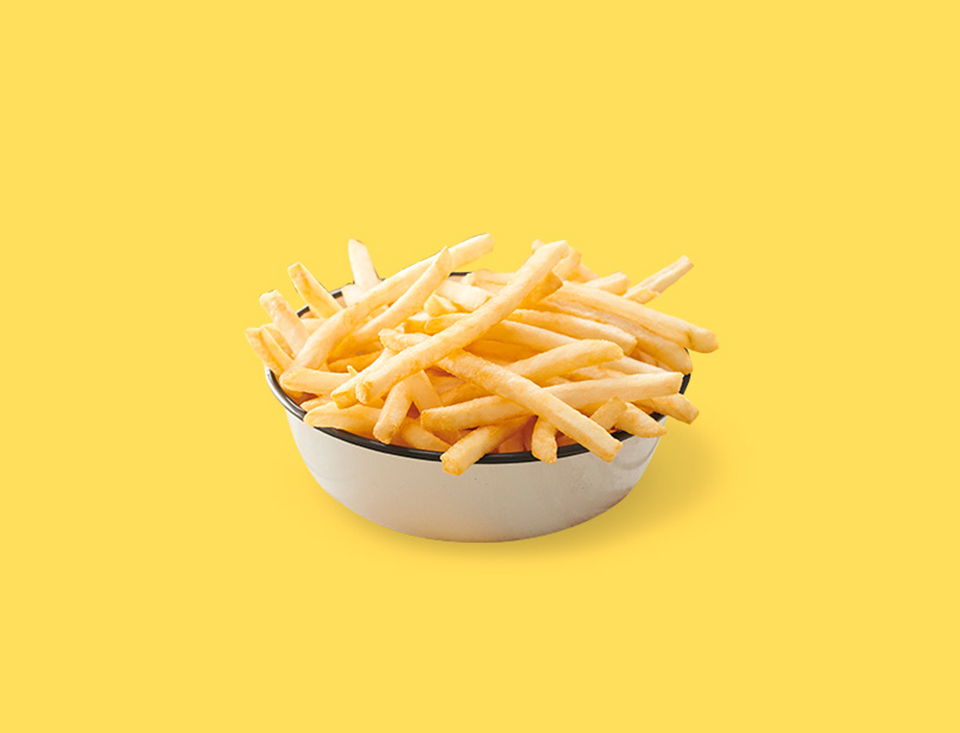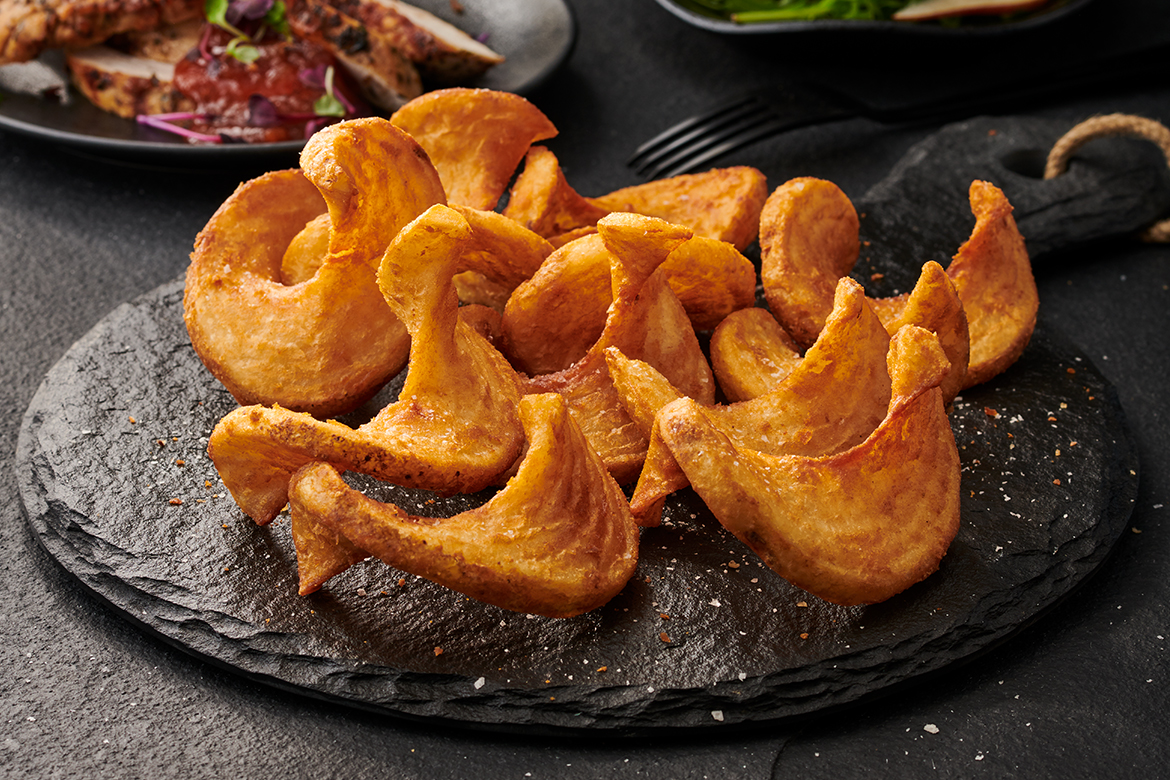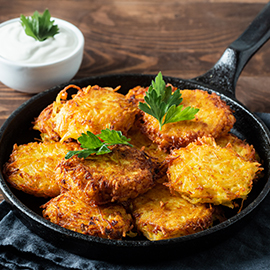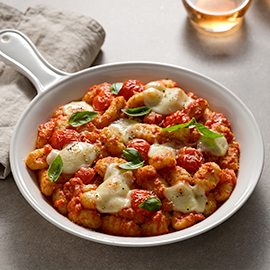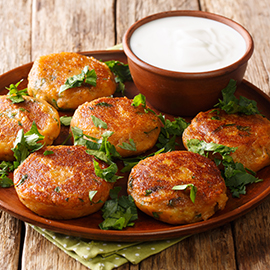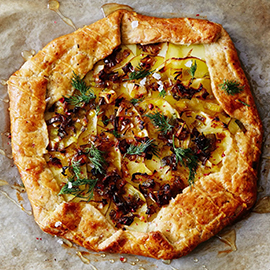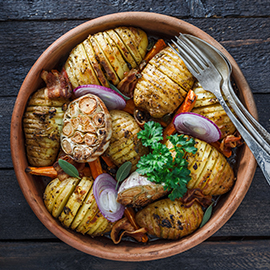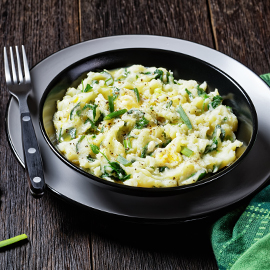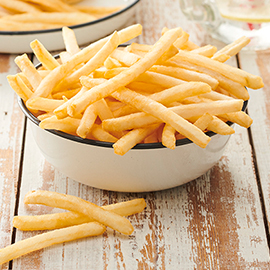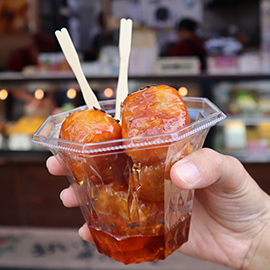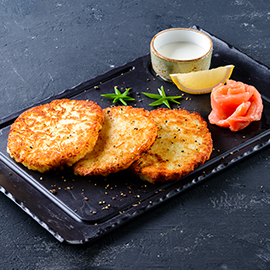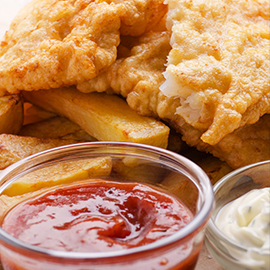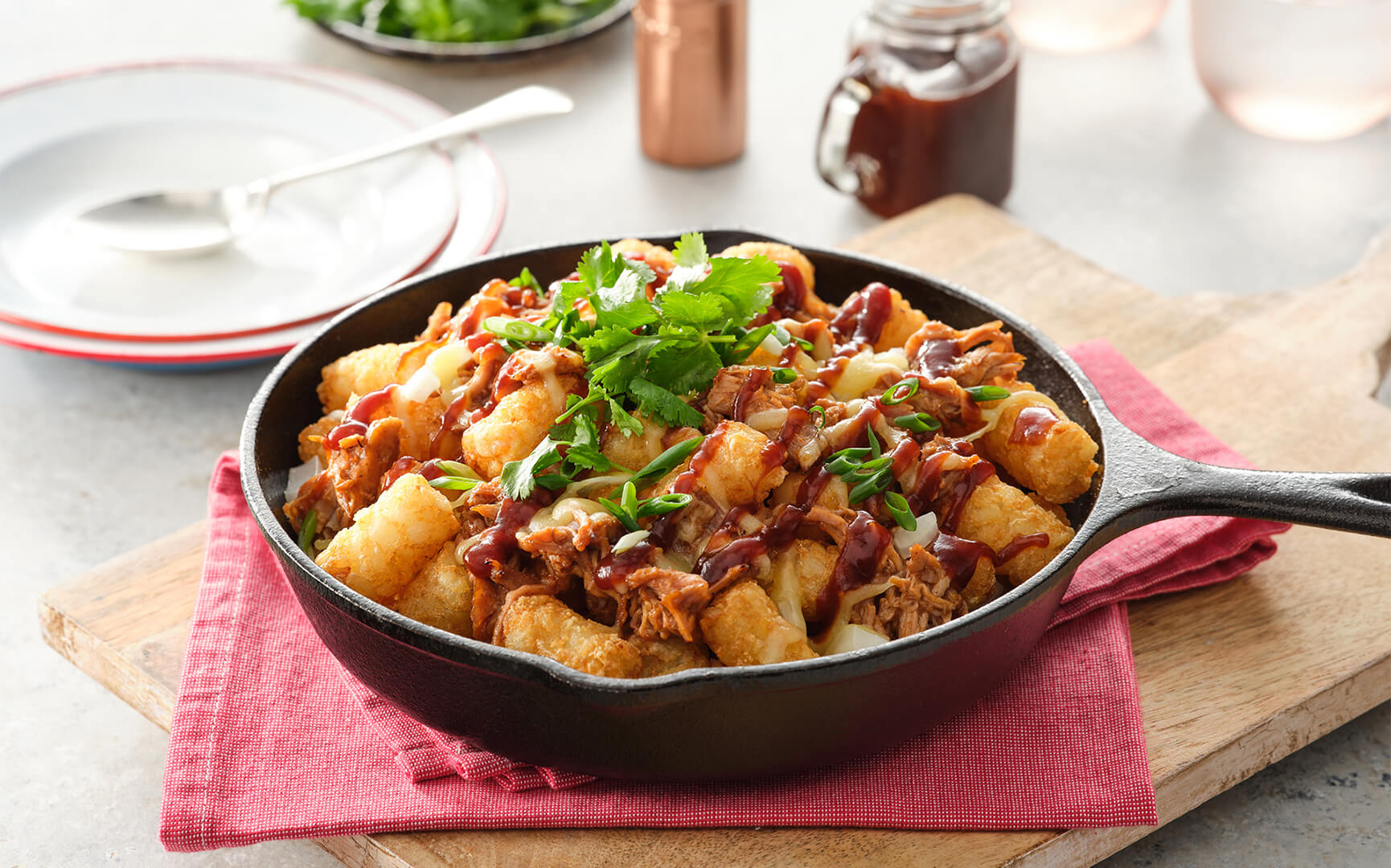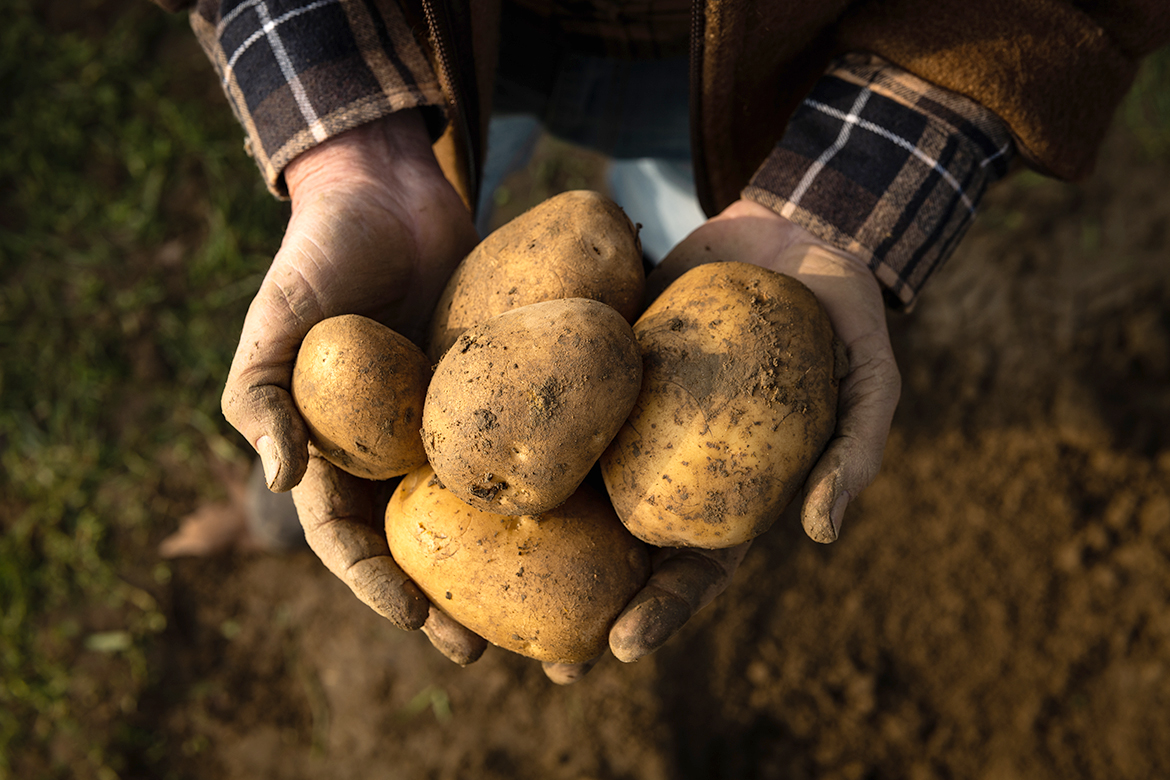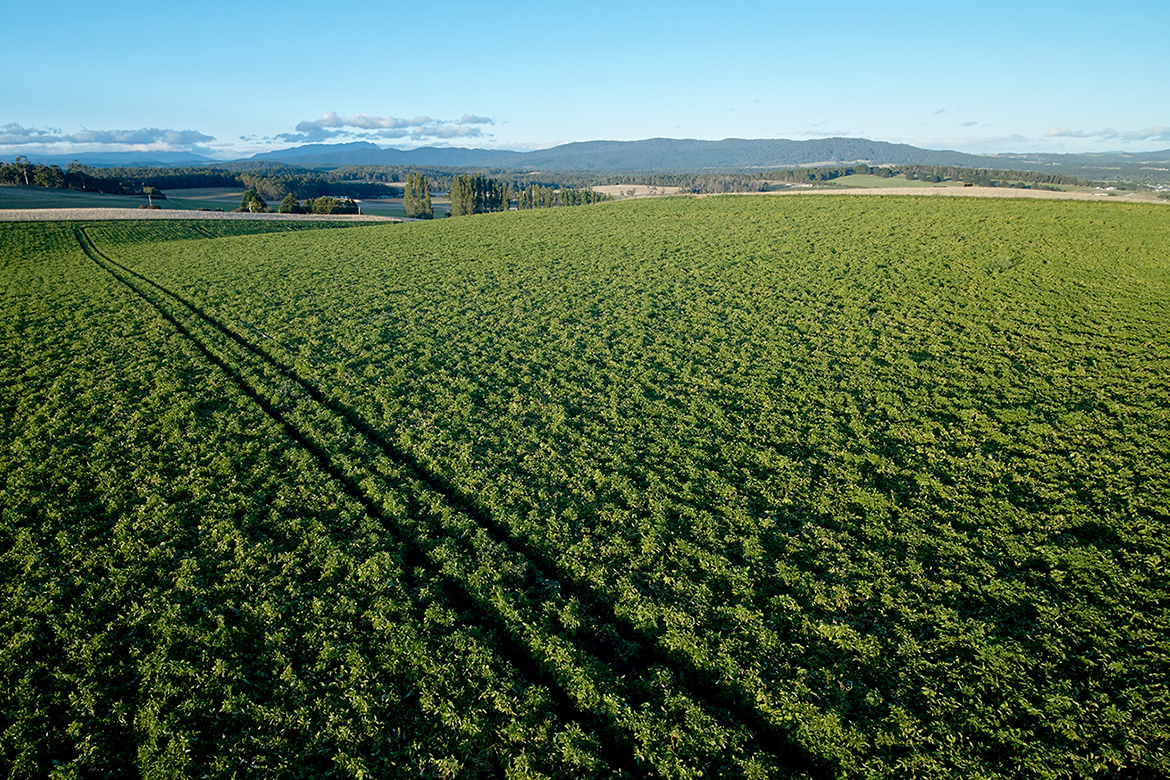Endless
possibilities
with
POTATOES
Glenn Cartledge
But, according to Simplot Australia Executive Chef David White, the potato can sometimes get an unjustifiably bad rap.
“For some reason, the potato doesn’t always get recognised as a vegetable,” says White. “We often hear people say ‘potatoes and veggies’ as though potatoes are somehow a different class.
The fact is, potatoes are a particularly good source of fibre, are high in vitamin C and vitamin B6 and contain loads of potassium.
So, really, they can be quite good for you and, of course,
people absolutely love the taste of them!”
But, beyond our shores lies a world of interesting ways to use potatoes.
From Ireland to India, potatoes form the basis of meals that define celebrated national dishes. These recipes demonstrate the versatility of the potato and offer inspiration for local chefs who want to take their potato dishes into imaginative new spaces.
The simple Ukrainian breakfast or lunch dish of deruny is made of potato, onion, eggs and salt, and can also be created from sweet potato and served as a dessert. While deruny is typically a main meal, these delicious pancakes are also occasionally offered a side dish.
Potato-based gnocchi is an Italian classic. Gnocchi usually also contains semolina, wheat flour and breadcrumbs, but can occasionally consist of eggs and cheese.
In India, Bangladesh and Pakistan, the spicy aloo tikki is a popular croquette-style snack that is served with chutney and yoghurt. ‘Aloo’ means potato, while ‘tikki’ means croquette. Aloo tikki is sometimes known as the Indian version of a hash brown.
From the French countryside comes the potato galette, a thin layered cake of herbed potato slices. It’s a simple recipe comprising seasoned potato, butter and parmesan cheese that is oven roasted and cut into wedges for serving.
Hasselback potatoes are a staple of Swedish cooking. At their best, these baked or roast potatoes are a crispy-on-the-outside, fluffy-on-the-inside delicacy sliced at roughly 3mm increments and topped with butter and garlic, and served with bay leaves or sage.
The country most closely associated with potatoes is Ireland, home to buttery potato mash, colcannon. This creamy creation includes cabbage and herbs but can also feature spring onion, leek and chives.
While French fries may have originated in France, it is the Americans who took these thin strips of seasoned and deep-fried potato to the world. The J.R. Simplot Company commercialised fries in the 1940s, leading to McDonald's contracting Simplot to supply them with frozen fries.
A deep-fried sweet potato snack from Japan that has been a favourite of university students for more than 100 years, diagaku imo is unique due to its sweetness. Literally meaning ‘university potato’, it comprises potatoes encased in a sweet, hard coating.
It was the Swiss who invented the recipe for evergreen favourite potato rösti. Consisting of grated potato pan fried in ghee, these fritters are the ideal base for smoked salmon, avocado and crème fraîche.
Whether you call it a potato cake, fritter or a scallop, Aussies are rather partial to their deep-fried fish ’n’ chip shop snack. The recipe couldn’t be simpler: a slice of potato covered in batter and deep-fried, typically served alongside your favourite battered fish.
The secret life of spuds
It turns out an awful lot of science over a long period of time has gone into producing the hot chips and French fries we all love.
“The best chip and fry potato is the Russet Burbank cultivar and, while it was identified for this job way back in the 1950s, to date we’ve not found a variety that is better,” says David White, Executive Chef at Simplot. “We look at around 300 potato varieties every year, but only find a handful that show any promise of replacing what we’ve already got.”
Soil temperature is a significant factor in the successful growing of potatoes, and the cool climate of Tasmania is ideal for Russet varieties. Potatoes are nutrient-hungry, so the rich, red soil of the island state is also a plus.
“Simplot is a big part of Tasmania,” says White. “It really is a symbiotic relationship between us and the communities down there.”
The next frontier for Simplot’s agricultural science services is optimising year-round quality of Tasmanian potatoes through advances in storage technology.
Says White: “We’re now working with farmers to build on-farm storage facilities. The challenge is to store potatoes for the 3-4months of the year when it’s too cold to harvest, while maintaining a just-picked freshness. Storage technology has evolved to the point where potatoes are put into warehouses that empty from the bottom, ensuring the doors never have to open.”
Being able to rely on a local source of high-quality potatoes is proving to be a great advantage
for dining venues at a time when the supply and cost of produce is unpredictable.
“Chefs love the story. They concerned about supply chain issues, so they’ve moved back to Australian suppliers—not just for certainly of supply, but also for health and hygiene reasons. It's now at the point where venues are proudly advertising on their menu boards that their produce is locally sourced.”

